04/09/2019|
Por Bruna Ribeiro
By Bruna Ribeiro
Translation: Alice Kasznar
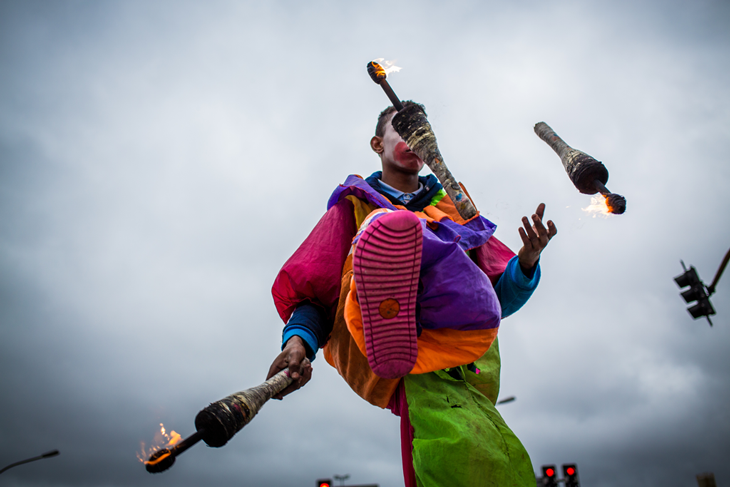
Crédito: Tiago Queiroz
Avenue near Armênia subway station, in downtown São Paulo, a group of boys meet on weekends to perform juggling tricks. But they are not just jugglers. Dressed as clowns with painted faces they bring some colors to this gray city. Contrasting with the city’s concrete walls, the colorful paint is like a scream. It is a call for visibility, a way these boys have found to say “look, I am here”. A silent cry for help, almost unconscious.
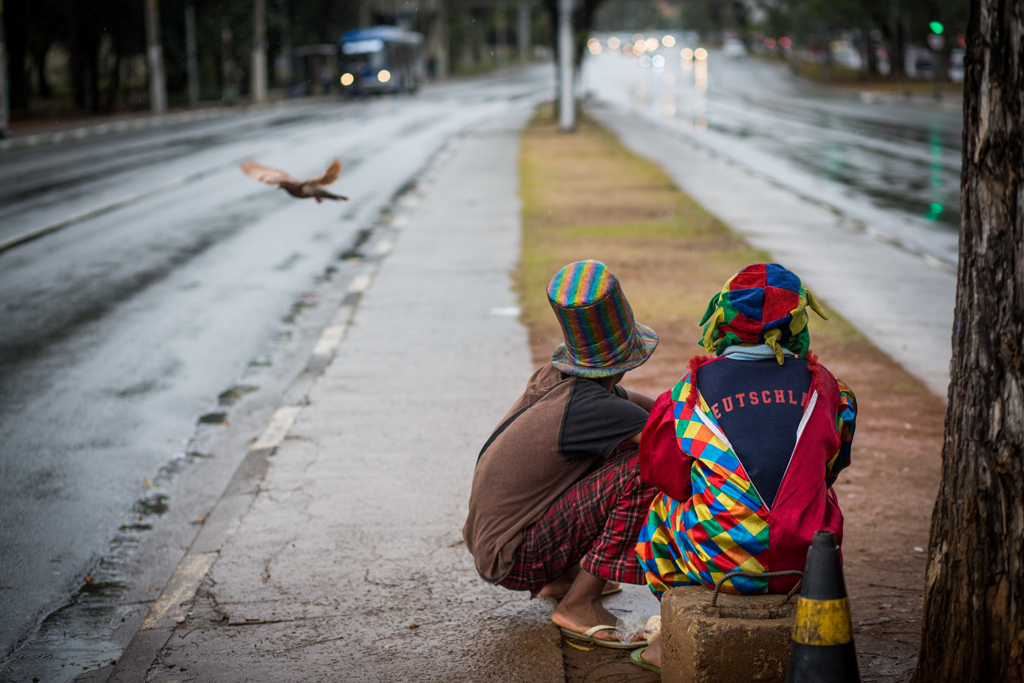
Crédito: Tiago Queiroz
There are about 20 boys from the same community (Vila Nova Galvão, Jaçanã Region, North Zone of the city) working in the crossing. Almost all of them are black, they are all poor and victims of child labor. Teenagers from ages 13 to 17 mingle with others who are in their 20s but have also started working before adulthood. Early in the morning, they organize themselves in subgroups and take the Tietê bus for half an hour until their destination. Some of them are already in their costumes, while others dress up when they arrive.
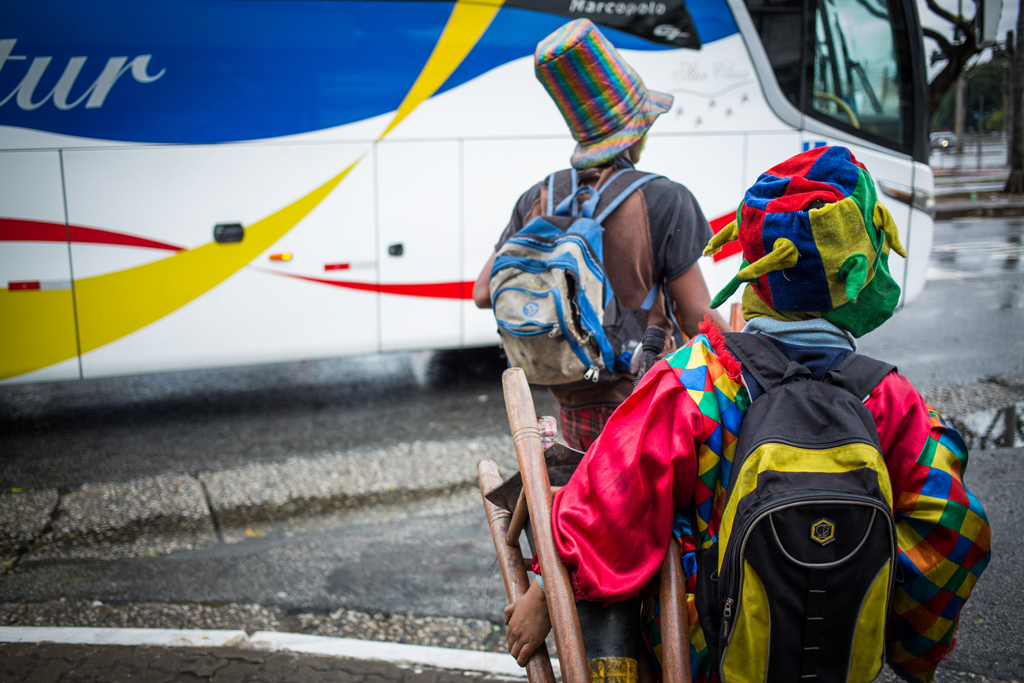
Crédito: Tiago Queiroz
When the traffic light turns red for the cars, they place their benches in the middle of the crossing and climb on them. Traffic cones are tossed upwards. Fire torches, lit with kerosene, draw pictures in the air. Backpacks are stored in the garden beds. The street becomes a stage.
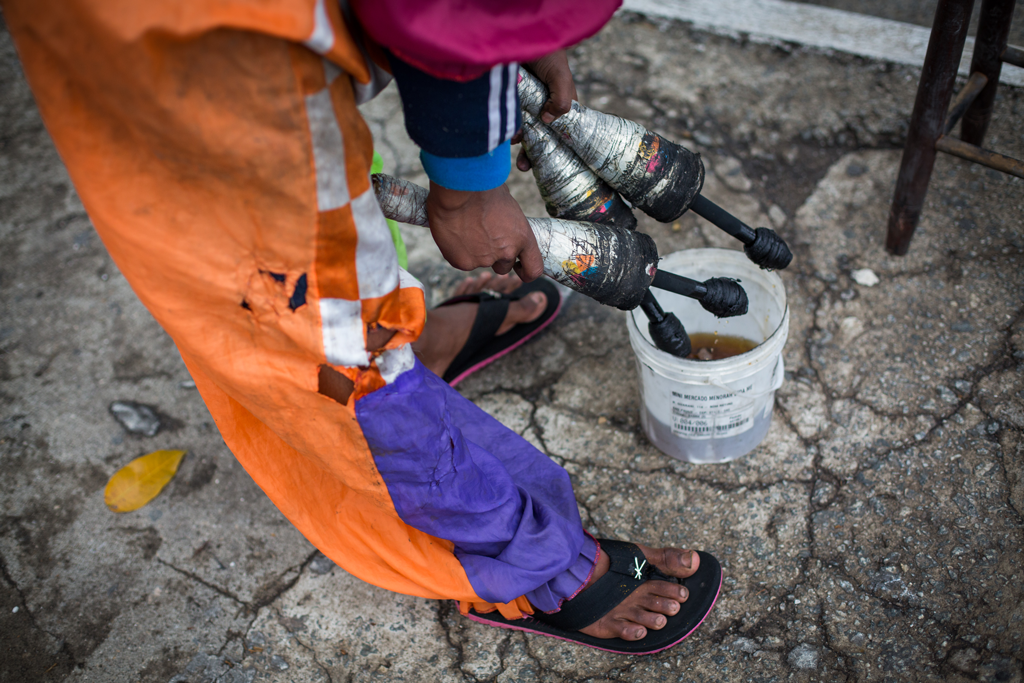
Crédito: Tiago Queiroz
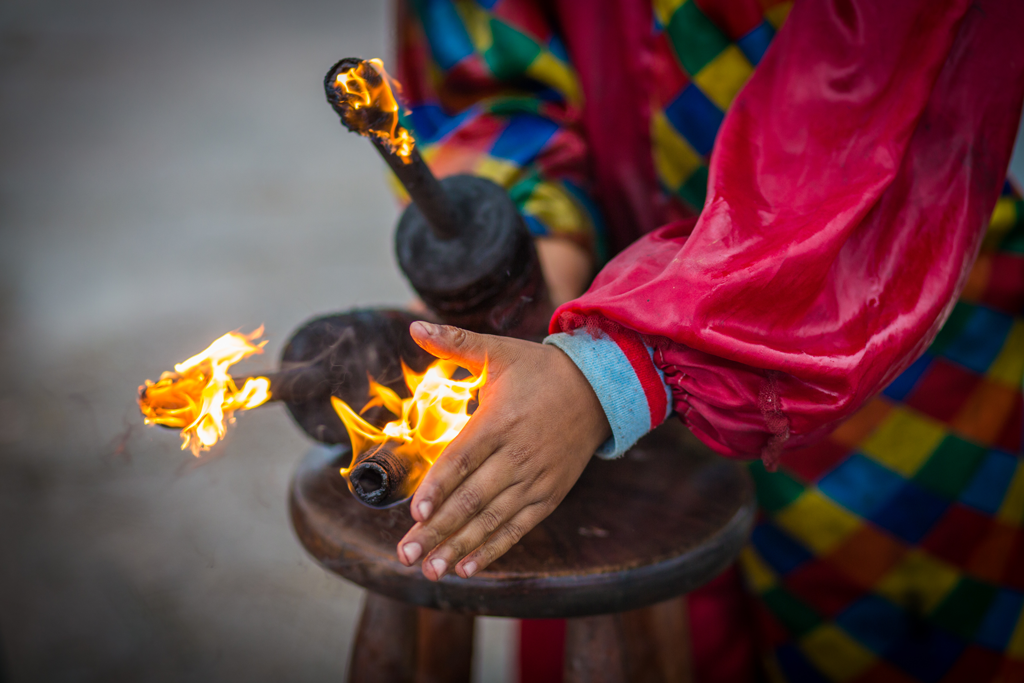
Crédito: Tiago Queiroz
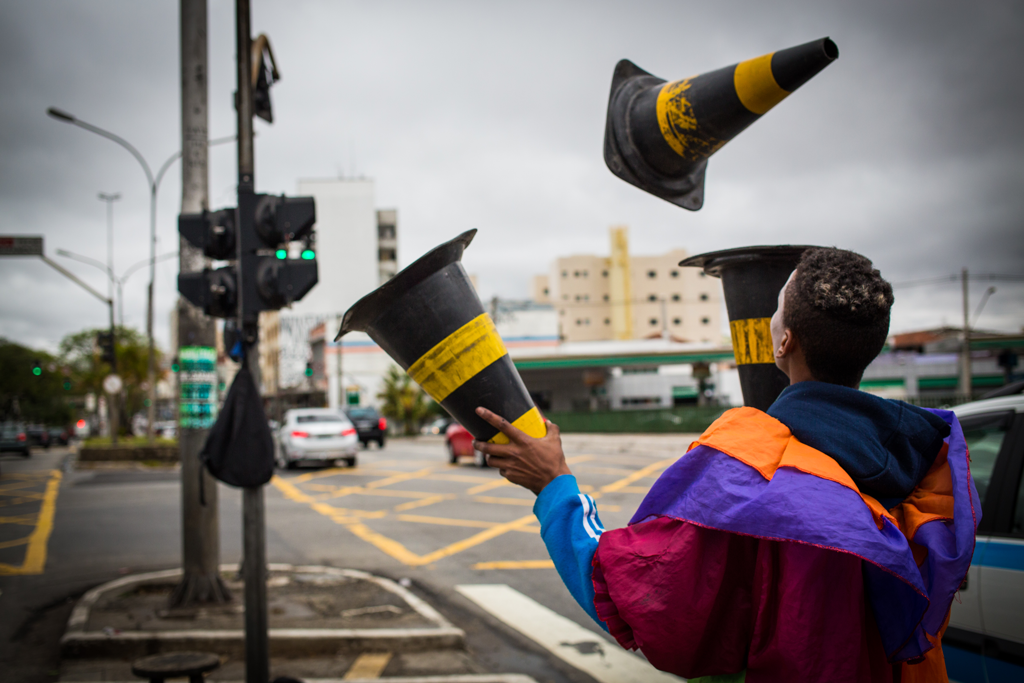
Foto: Tiago Queiroz
21-year-old Lucas * was the one who brought the art of juggling to the community. He learned everything from his cousins from the South of Brazil, who were members of a circus, but abandoned the stage to make a living on the streets. He inspired the boys – who often get coopted into crime – to “earn honest money to help their families.”
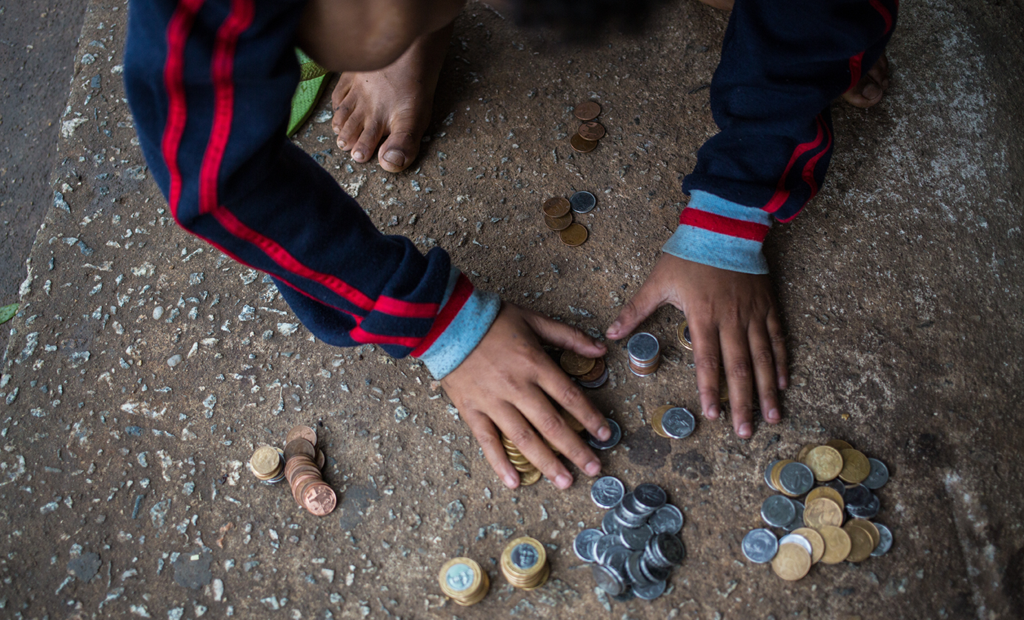
Crédito: Tiago Queiroz
The uncolorful lack of protection
Antônio *, 20 years old, is part of this plot. Working since he was 15, as gardener assistant and a chainsaw operator, he confesses that he has already “surrendered to drug trafficking because the pay was good.” Almost R$ 1000 per day. With their juggling performance on the streets, they make between R$50 to R$100, depending on their luck. He has participated in robberies twice, but disliked it and gave up following this path. Ironically, he denies committing the crime he was arrested for.
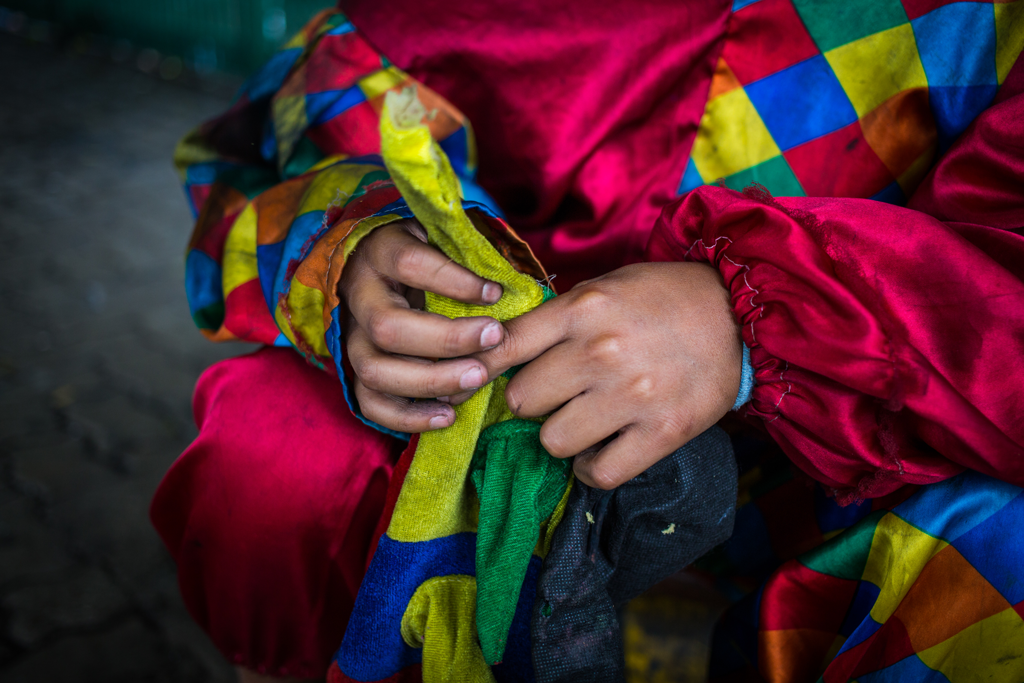
Crédito: Tiago Queiroz
It was August 2nd. Some friends asked his help to change the tire of a car. Antônio – Evangelical, as most of the group – swears to God he did not know it was a stolen car. He wanted to explain himself, he was beaten by the police and he also hit them, so angry he felt for this injustice. He fled, jumped into the river that crosses the slum, was shot and hid in a hospital. In the end, he was arrested anyway. The next day, the car’s owner did not recognize him and he was released. Despite this, he needs to report to the police every three months, for four years. He was charged under article 180 of the Criminal Code, for “acquiring, receiving, transporting, carrying or concealing, for one’s own benefit or that of others, something that one knows to be a product of crime.” He had dropped out of school when he was in sixth grade.
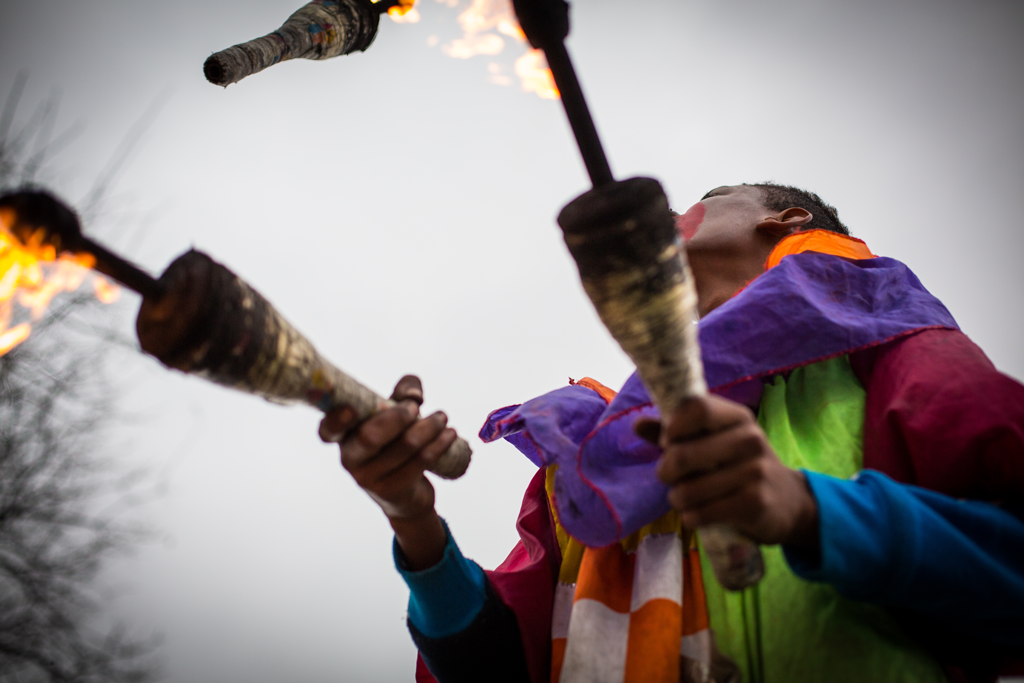
Crédito: Tiago Queiroz
Many boys and girls who work on the streets are no longer studying when they become 15 years old . Others go to school in the evenings because they have a full week juggling in different corners of the city. Antonio wants to go back to school and is waiting for a spot, but he missed the enrollment deadline.
“Getting a job without studying is hard, but I prefer the streets because here I feel free. I don’t like to obey a boss. Here I learn a lot of things”, he says. One learns even what one is not prepared for. Child labor has left deep scars in Antônio.
Paulo Bonilha, a pediatrician and public health physician at Unicamp and the Municipal Healthcare system of Campinas, explains that children and teenagers are not emotionally and intellectually mature to work, being unaware of the risks they run. “They are injured six times more than an adult, in the same working conditions. The street is a place full of risks, spanning from car accidents to exposure to violence”, asserts Bonilha, backed by the knowledge that he collected in his years as coordinator of the Child Health Department at the Ministry of Health.
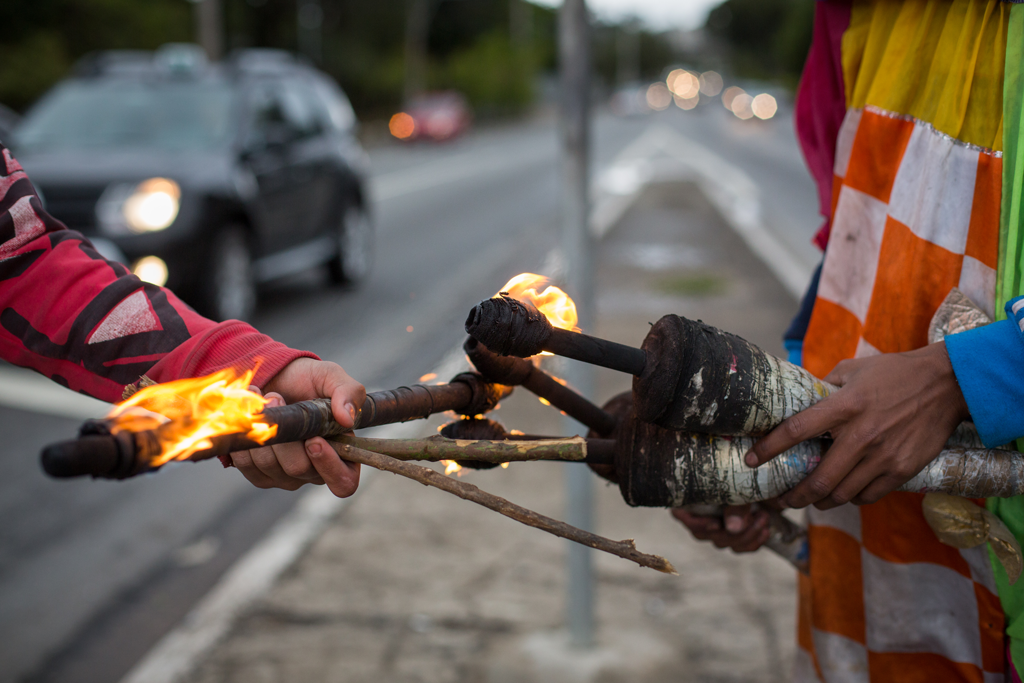
Crédito: Tiago Queiroz
While working, the child stops going to school, resting, practicing sports, learning to play an instrument and carrying out other activities that could complement school education. Still according to Bonilha, being responsible, since an early age, for earning money puts much pressure on a child, causing significant stress. Another serious consequence is the reproduction of the intergenerational cycle of poverty.
Leo Duarte, tutelary council, explains that the Council usually sends social assistants to speak with the children’s families before punishing them for allowing their offspring to work. The assistants identify the specific needs of that family and places them in social programs, trying to decrease the economic and social vulnerabilities that lead to child labor.
The Clown who does not laugh
Little clown, little clown, so many contradictions in you. We are used to see clowns as amusing and generous figures that symbolize the joy of childhood. But where is the joy of the artists at Tiradentes Avenue? Where is the spark in their eyes? Wellington Nogueira, professional clown and founder of Doctors of Joy, cannot see it. No one can. The eyes of the working child clowns do not shine, they are always looking down. When the child looks up, their eyes seem lost. What’s your dream? I’m not sure. What do you like to do most? I’m not sure. So much hopelessness hidden under a clown costume.

Crédito: Tiago Queiroz
Nogueira can easily distinguish between the performance of a street artist and the mechanical act of a working child. “There are artists who love to perform in the streets because you can learn so much by doing it, but these boys, even being very good at it, they are trying to earn a living, “he says. “Honestly, I think children should be able to play more than anything else. Art and culture should come to them through leisure. This is what will put them on the right path.”
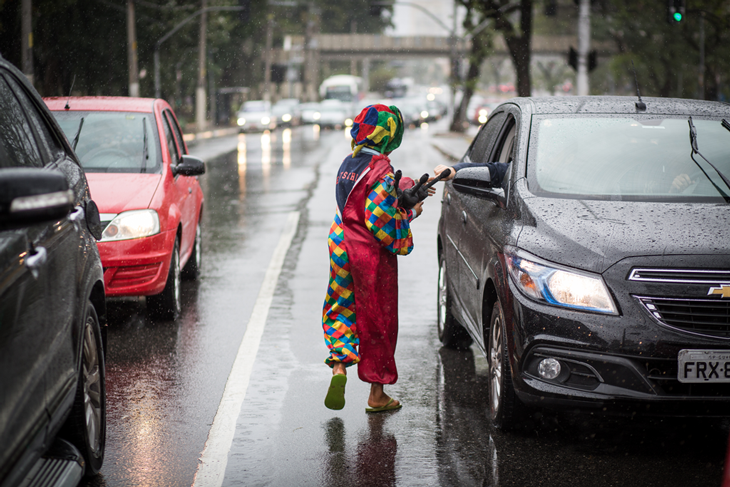
Crédito: Tiago Queiroz
* Children’s names were modified in order to respect their privacy.





